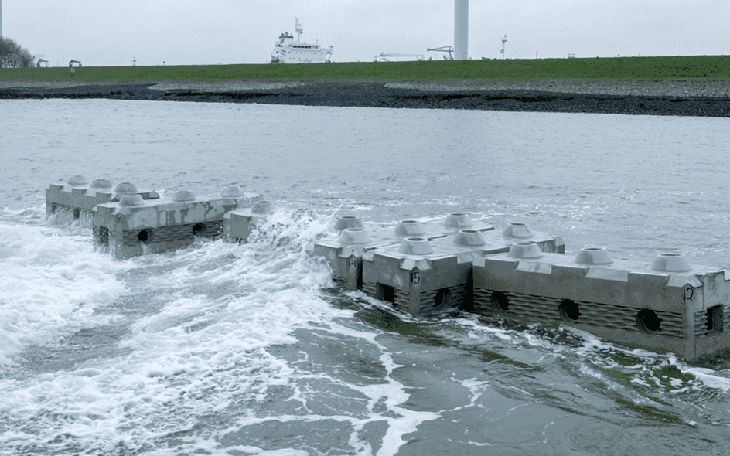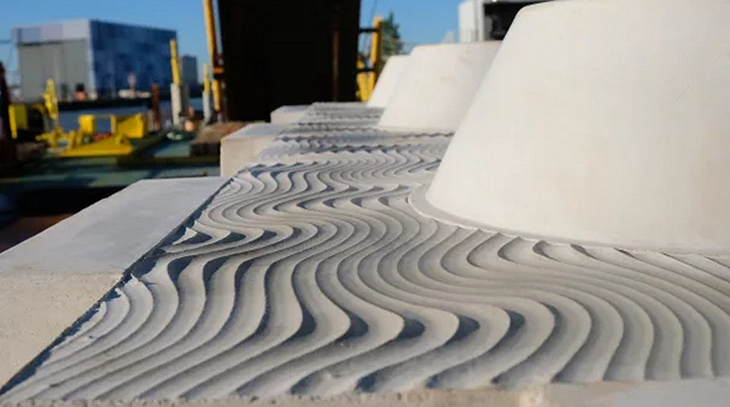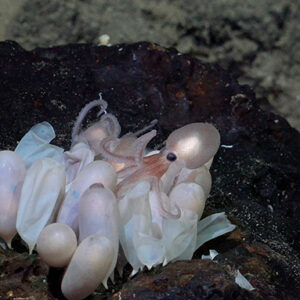
These huge concrete structures may look like giant Lego blocks, but they’re actually nothing of the sort. However, these bricks off the port of Rotterdam serve a great purpose. They are acting as a new seawall that also double as a home for marine life.
In this groundbreaking approach to protect the populations of mussels, fish, crustaceans and many other sea animals, these artificial oyster reefs have been heralded as a very innovative solution. These bricks were specifically designed to not just enhance biodiversity, but to possess remarkable durability, which is effective in countering offshore erosion caused by the ocean’s powerful waves and exhibiting the strength to withstand incoming storms.
Coral reefs are incredible. Aside from being incredibly diverse and colorful, they have the ability to absorb 97% of the energy of a storm surge. As a result, they prevent the seafloor from eroding, as well as the terrestrial ecosystem above. During the yearly rainy season in Malaysia’s Perhentian Islands, their rich coral reefs prevent damage to the island’s forests and structures.
Due to the relentless waves that come with the rainy season as well, the reefs nearest to the shore tend to break apart and die. However, they eventually ground down into soft white sand that is typical of a number of tropical beaches. Afterwards, the corals regrow and the cycle continues year in, year out.
However, when it comes to artificial reefs, they’re not as flexible nor as beneficial for the environment. They are normally very cheaply made, using either waste products that come from old cars or even recycled tires or trash, or made from solid concrete that doesn’t make much room for nature to incorporate itself into the structure.
When it comes to wave breaks and seawalls, they tend to be the same. The cement blocks repel the force of a wave rather than disperse it. As a result, the rebounding wave mixes with the force of the subsequent wave to become even stronger.
As for these Lego-like blocks created by the Dutch company, Reefy, they manage to tackle two of these shortcomings by making holes in the blocks, which lets the wave expand its energy to go through the block rather than bounce off of it. These holes also allow the animals and sea creatures to pass through them, or even make their home inside of them.
Moreover, these structures were created with the outside portions using low-carbon concrete that’s textured to encourage the growth of oysters and mussels. At the same time, the company is creating a “Reefy Paint” that’s made from calcium carbonate as a type of supplement for the bivalves.

Reefy’s CEO, Jaime Ascencio, told Fast Company, “The idea of having these blocks is to provide the foundation for nature to take over—to have a living layer that can grow with sea level rise and self-heal in order to attract these key species, which are, in a way, the architects of the underwater world.”
Incredibly, just like Lego Bricks, these recreated concrete structures can be interconnected into any type of shape. The one that spans the mouth of the river at Rotterdam Port is made of 17 bricks, totaling 80 feet in length and 10 feet in height. The company’s patented technology examines the force and angle of the waves to figure out the optimal pattern to reduce the energy of the wave.
Thankfully, there are many places around the world that are getting serious about using reef replacement to make climate-proof coastal infrastructure to best help the environment.
What are your thoughts? Please comment below and share this news!
True Activist / Report a typo


